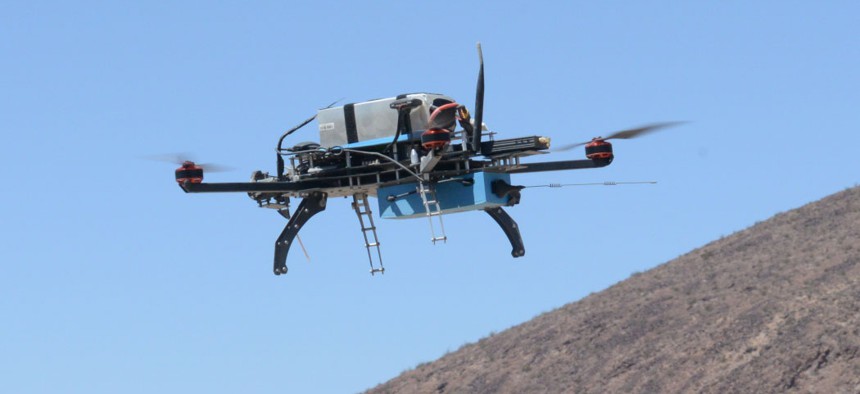New small UAV could be soldiers' future eye in the sky
The National Training Center hosts operational tests of the ISR drone, which the Army said is so new it hasn’t been named yet.
The military has been working on a number of options for unmanned aerial vehicles that could provide ISR (intelligence, surveillance and reconnaissance), from a Matchbox-size micro drone that could work in tight spaces to long-range systems that could be launched from ships.
The Army currently is testing one that could land somewhere in the middle, with a fairly small UAV that could feed information to brigade commanders during combat operations. The UAV, which the Army said is so new they don’t yet have a name for it, is being tested at the National Training Center at Fort Irwin, Calif., the Army said.
In one test earlier this month, the vehicle was used to support the 1st Infantry Division's 1st Armored Brigade Combat Team, which was at the NTC for a two-week exercise that included, among other things, employing embedded cyber teams.
During the UAV exercise, the drone collected intelligence on an adversary within the operational environment, feeding that data to cyber operators and intelligence personnel who then passed that information to brigade commanders.
The military sees UAVs as being essential to future military operations. Plans not only include the large, long-range aircraft such as the Predator but a variety of uses for smaller unmanned vehicles that can work in urban settings, inside buildings and in hilly terrain that can interfere with lines of sight.
Some units also have been testing new technologies, such as Harris Corp.’s Small Secure Data Link, an 18-ounce wideband radio that can be mounted on UAVs such as the RQ-21A Blackjack and act as a relay, extending the range of communications. Another new wrinkle for extremely small drones are miniaturized vision systems that can be used in drones as light as a few grams.
While the services and vendors continue to develop new capabilities for small, fairly inexpensive and readily available drones, military leaders are aware that adversaries can do the same, even using them as “flying IEDs.” So the Army and other services are in the market for anti-drone technologies ranging from detecting and jamming their communications, to a number of efforts to develop laser weapons that can take out drones and other targets.




